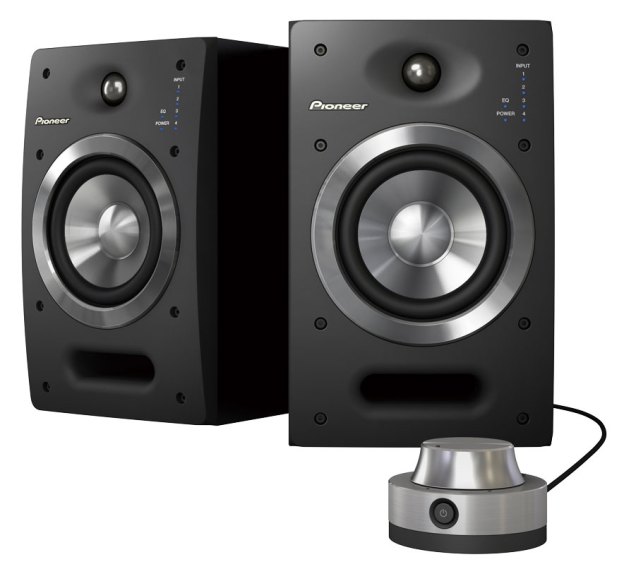 While at CEDIA last week, we couldn’t help but notice that several manufacturers were doing their best to make it known they had moved into the powered-speaker market. Monster Cable was sure to show off its Clarity HD Model 1, Paradigm was rocking the recently introduced Active Atom and now Pioneer, as it turns out, is calling attention to its take on the powered speaker.
While at CEDIA last week, we couldn’t help but notice that several manufacturers were doing their best to make it known they had moved into the powered-speaker market. Monster Cable was sure to show off its Clarity HD Model 1, Paradigm was rocking the recently introduced Active Atom and now Pioneer, as it turns out, is calling attention to its take on the powered speaker.
One might naturally ask: How are these different from computer and desktop audio systems? Well, for one thing, these powered speakers are on an entirely different level from a build- and sound-quality standpoint. Whereas most computer speakers are designed to sound good for games, movies and casual music listening, they aren’t nearly accurate enough for use by a recording artist, DJ or studio producer. Now that all three of those roles are more and more commonly handled by the same person, the importance of combining accurate sound reproduction with versatile connectivity and control are paramount.
Pioneer’s S-DJ05 and S-DJ08 appear to hit all of those points and then some. As the model names imply, the two are differentiated by 5-inch and 8-inch midbass drivers (the S-DJ05 are pictured above). If there’s a difference in amplification power, Pioneer isn’t disclosing it, but we do know that each speaker is bi-amplified.

Both models offer some impressive connectivity with balanced XLR inputs, balanced 1/4-inch inputs and two RCA inputs found on the back of each speaker. Along with all the inputs are two EQ dials for high- and low-frequency adjustments.
The control module, which looks a lot like the sort we’ve seen with computer speakers, offers enough control to alter volume and EQ, and switch among any of the speakers’ four inputs. This means that at the press of one button, one could listen to a digital synthesizer one minute, switch to a mixing board the next, then route the sound through a couple of effects processors and be compared instantly.
While Pioneer is clearly steering these speakers toward the the DJ crowd, we can see them as being useful for all sorts applications; a desktop audio system, mobile recording studio or a musician’s personal monitor, perhaps. The question remains, however: Do they actually sound good? At $899 per pair for the S-DJ05 and $1199 for the S-DJ08, we certainly hope so. Of course, we’ll know for sure soon enough. We expect our review samples to arrive shortly and we’ll report our observations soon.



